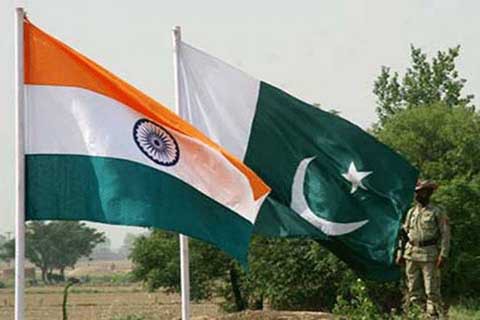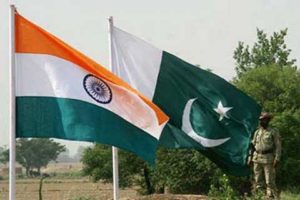Tensions between India and Pakistan escalated into open conflict on Wednesday morning, April 7, marking another episode in a decades-long rivalry rooted in the 1947 partition. The two nations have clashed repeatedly over territorial disputes, particularly the contentious Kashmir region, which remains a central trigger for their hostilities.
In terms of military strength, both countries possess formidable capabilities, though India holds a significant numerical advantage. According to the Global Firepower 2024 report, India maintains around 1.45 million active military personnel, supported by approximately 1.15 million reserves and close to 2.5 million paramilitary troops. Pakistan, despite its smaller population, fields a well-organized force of about 654,000 active personnel, 550,000 reserves, and 480,000 paramilitary forces.
India also dominates in air power, operating an estimated 600 fighter jets and 800 military helicopters, compared to Pakistan’s 350 jets and 300 helicopters. However, Pakistan is quickly enhancing its unmanned aerial capabilities through strategic defense partnerships with Turkey and China. The Indian Air Force benefits from a diverse fleet, including French Rafale fighters, Russian Su-30MKIs, and the domestically produced Tejas.
Pakistan, in contrast, relies heavily on the JF-17 Thunder (developed in collaboration with China) and the American-made F-16.
Also Read: The Forty-Four-Days of Glory: Azerbaijan’s Struggle for Justice and Peace
Both India and Pakistan are declared nuclear powers. As reported by the Bulletin of the Atomic Scientists in 2024, India holds between 160 and 170 nuclear warheads, while Pakistan is estimated to possess between 165 and 175. Despite similar stockpile sizes, their nuclear doctrines diverge: Pakistan follows a “first-use” policy, signaling readiness to deploy nuclear weapons preemptively under severe threat, while India upholds a “no first use” stance, committing to retaliatory use only.
In the maritime domain, India’s naval capabilities far outpace those of Pakistan. The Indian Navy operates a blue-water fleet that includes two aircraft carriers, INS Vikrant and INS Vikramaditya. Pakistan’s navy is smaller and strategically focused on short-range coastal defense operations.
Overall, India leads in manpower, air and naval strength, and indigenous defense manufacturing. Yet Pakistan remains a capable and unpredictable adversary, with its nuclear readiness, asymmetric strategies, and expanding drone capabilities reinforcing its deterrent posture. Should full-scale war erupt between these two nuclear-armed neighbors, the consequences would be devastating, not only for the subcontinent but also for the broader stability of South Asia and the international community.[]
Mi’raj News Agency (MINA)
Also Read: Palestine Solidarity Month: A Collective Movement for Al-Aqsa and Palestine’s Freedom





























 Mina Indonesia
Mina Indonesia Mina Arabic
Mina Arabic